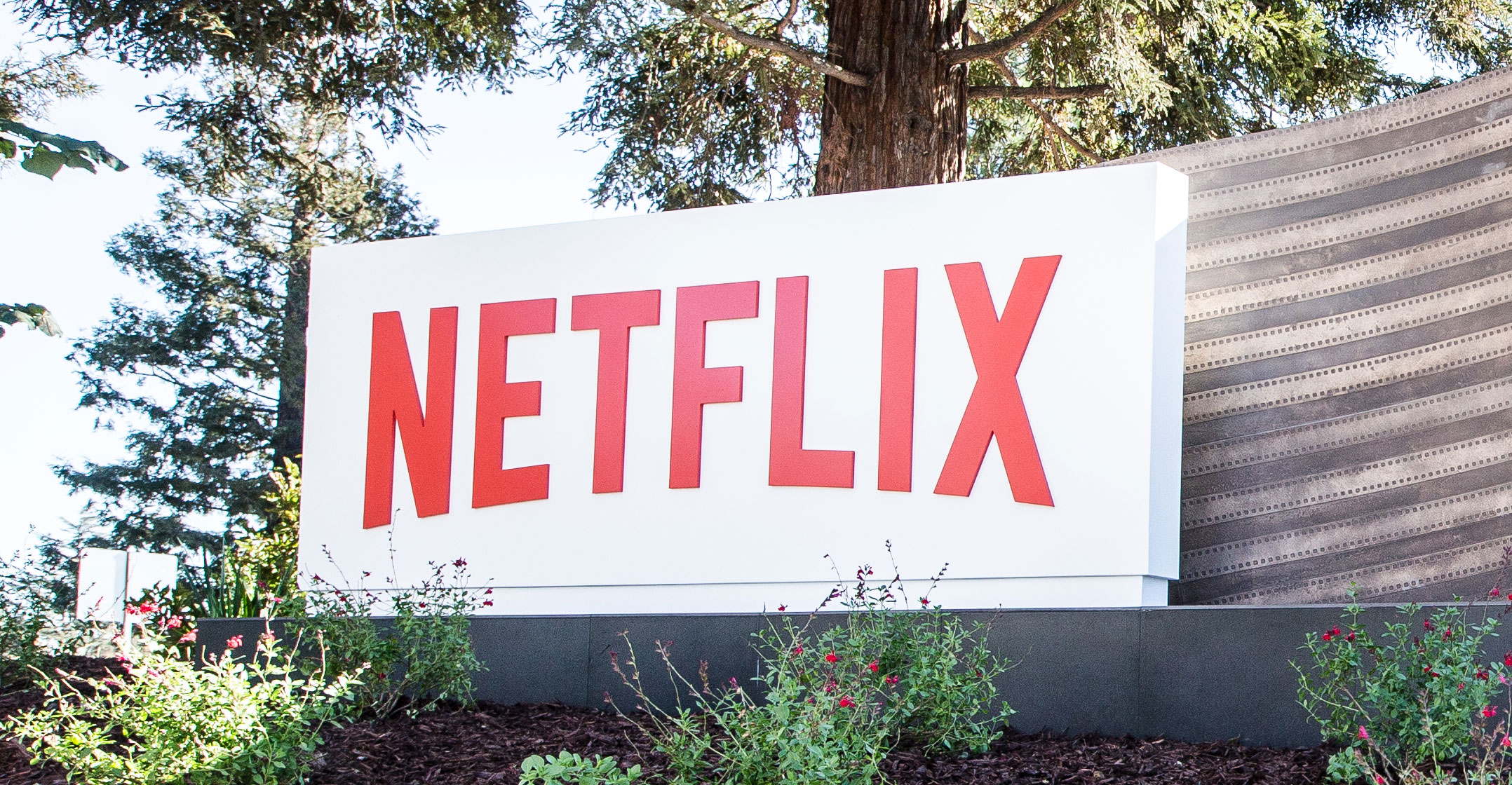 A month ago, back when things made sense, Wall Street was convinced that when the rout came, high-priced technology stocks would lead the way down. That’s not how it’s playing out.
A month ago, back when things made sense, Wall Street was convinced that when the rout came, high-priced technology stocks would lead the way down. That’s not how it’s playing out.
Internet and software stocks like Amazon.com and Netflix are instead the only companies providing anything approaching stability, amid the fastest 30% plunge ever recorded. Year to date, the Nasdaq 100 is down 20% compared with the S&P 500’s drop of 31%.
Dominated by the bull market’s darlings — Microsoft, Apple and Amazon alone make up almost a third of the benchmark — the tech-heavy gauge is poised for its best month versus the S&P 500 in 18 years. Only one other time in history has the broader index been 30% below its peak without the Nasdaq 100 doing worse: Black Monday of 1987.
“If you would have told us a month ago that the S&P 500 would correct 30% and leave the Nasdaq 100 completely unscathed on a relative basis, we would have not believed you,” Bank of America strategists including Stephen Suttmeier wrote to clients on Monday. “We will not fight the trend, but the Nasdaq is in the most parabolic rise relative to the S&P 500 since the rally into the 2000 tech bubble peak.”
This isn’t how it was supposed to be. For years, among pundits composing the bull market’s obituary in advance, it was taken as a given that concentrated gains in a small group of technology megacaps would one day spell the end. They’re too expensive and too vulnerable, the argument went, with price-sales ratios almost double the S&P 500’s and profit margins fattened to records.
‘Key beneficiary’
What sceptics failed to foresee was that the qualities that helped the companies expand in good times would stand them up when everything was crumbling. Measures from cash flow to credit ratings favour the Faangs — Facebook, Apple, Amazon, Netflix and Alphabet — whose sales for the most part are likely to stay brisk even with everyone indoors.
On Monday, when the broader index fell 3%, the Nasdaq 100 ended slightly higher. An 8% rally in Netflix helped. Baird analysts called the streaming service a “key beneficiary” of the various sheltering orders in place around the country. Since the market rolled over on 19 February, the five megacap tech names all have fallen less than the S&P 500.
Considering the cause of the latest downturn, a deadly outbreak that has shuttered economies and forced people to stay in their homes, much of the Nasdaq’s out-performance could be chalked up to the composite of its heavyweights. Netflix, for example, has gained 11% this year. The firm makes up 2.2% of the Nasdaq 100, but less than 1% of the S&P 500.

Amazon is 10% of the tech gauge’s holdings, 4% of the S&P 500 and not even in the Dow Jones Industrial Average. It’s still holding onto gains this year as home-bound residents rely on more delivery services. The Nasdaq has heftier tilts to videogame makers, too, including Activision Blizzard and Take-Two Interactive Software, that have fared better.
While some investors have been amazed by the continued resilience of the same industry and companies that drove the 11-year bull market, others point to the fact that these are now well-developed companies with real profits and continued growth potential.
“When people take a breath and go, what should I go in and buy, they are going to go to high-quality companies that can weather a long horizon,” said Mark Stoeckle, CEO of Adams Funds — the very ones that dominate the Nasdaq 100. “People will end up selling the high quality tech stocks last.”
So far, that notion has prevailed for software firms. A basket of expensive software stocks compiled by Goldman Sachs — those with elevated ratios of enterprise value to sales — is down less than 2% in 2020.
Greg Boutle, head of US equity and derivative strategy at BNP Paribas, sees the potential for investors to continue adding to their technology holdings, even in the current volatile market.
“Tech has actually displayed some quite defensive attributes,” Boutle told Bloomberg Television. “We’ve seen a lot of tech companies have a very strong cash flow, very robust balance sheets, secular growth stories with strong margins.”
Options markets bring into sharp relief the inability of the Nasdaq 100 to crumble as much as the broader benchmark equity index. VXN, an index which measures the 30-day implied swings in the tech-heavy gauge, has traded at a discount to the VIX, the equivalent for the S&P 500, for nine consecutive sessions. That’s the longest such streak since the record run of 27 in the first quarter of 2009. Since 2002, VXN has averaged a premium of over five points relative to the VIX Index.
Abnormal
Beyond the Nasdaq 100’s outperformance, this abnormal state of affairs also reflects the popularity of S&P 500 options as a proxy go-to vehicle to hedge against declines in any risk asset.
Still, strategists at Bank of America aren’t sure the market can truly bottom until the bull market’s winners face outsize pressure, too.
“There is a risk that the 2020 market correction continues until investors sell what is near and dear,” they wrote. “The relative winners could get hit and experience at least some underperformance.” — Reported by Sarah Ponczek and Luke Kawa, with assistance from Elena Popina, Claire Ballentine and Joanna Ossinger, (c) 2020 Bloomberg LP




